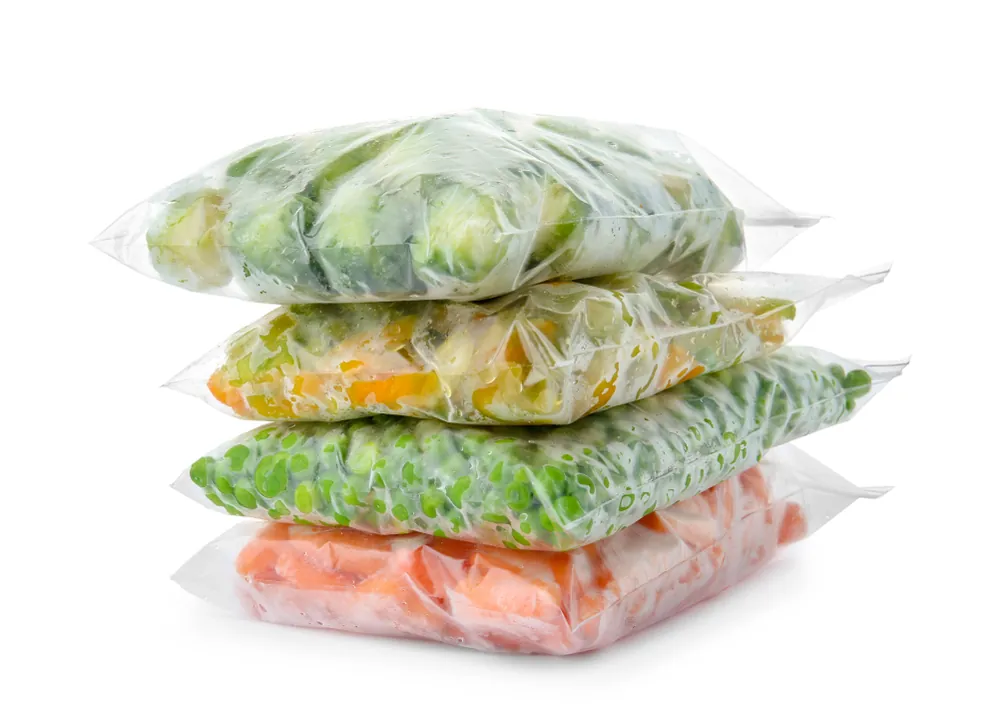
Shipping Frozen Food
Chill out with our frozen food shipping service! From gourmet delights to everyday essentials, we deliver your frosty favorites with speed and reliability. Explore our icy-cool shipping solutions and keep your cravings satisfied, no matter the distance!
Key Takeaways:
- When preparing frozen food products for transportation, use appropriate packaging materials, ensure products are completely frozen, add insulation and cold packs, label packages clearly, and follow regulations and standards for food safety and temperature control.
- Prepare necessary documents such as Bill of Lading, Commercial Invoice, Health Certificates, and Customs Documentation to comply with regulations and ensure smooth transportation.
- Choose a reputable freight carrier specializing in handling temperature-sensitive items for shipping frozen food products. Consider their experience, real-time tracking systems, reliability, cost, and insurance options.
- Select the appropriate transportation method based on temperature control capabilities, regulatory compliance, distance, duration, and reliability. Options include refrigerated trucks for shorter distances, air cargo for long distances, and ocean freight for international shipments.
Shipping frozen food products through freight is a meticulous process that prioritizes maintaining the integrity and quality of the perishable goods. This can be a convenient and efficient option for businesses and individuals. When looking to ship frozen food products, it’s important to select a reputable freight carrier with specialized experience in handling temperature-sensitive items.
At FreightCenter, we have extensive experience and expertise in handling refrigerated freight, including shipping frozen food products. We work with a network of carriers specializing in refrigerated transportation and take extra care in selecting the appropriate carrier based on the specific temperature requirements of the goods. With our efficient logistics management, industry connections, and commitment to customer satisfaction, you can trust that your frozen food products will be handled with care.


Choosing the Right Freight Company to Ship Frozen Food Products
To ensure the safe and efficient transportation of your goods, choosing the right freight company is important. This means choosing a company specializing in cold chain logistics and having experience in handling and transporting temperature-sensitive goods. Also, look for a freight company that offers real-time shipment tracking and monitoring systems. These systems provide visibility into the location, temperature, and condition of your frozen food products throughout transportation.
Reliability, cost, and insurance are also things that should be considered before choosing a freight company. At FreightCenter, we offer a wide range of shipping services, very competitive rates, various insurance options, a large carrier network, and real-time tracking, and our expertise and customer support will help you throughout the process.
Choosing the Right Transportation Method to Ship Frozen Food Products
Before deciding on which transportation method you will use to ship your frozen food products, you should consider temperature control capabilities, regulatory compliance, distance and duration of the shipment, cost implications, and the transportation provider’s reliability to determine which transportation mode is best for you. The most common freight methods for shipping frozen food products are air freight, ocean freight, and ground freight, which all offer temperature-controlled units.
Refrigerated trucks are popular for transporting frozen food products over shorter distances. They are equipped with insulated containers that maintain the required low temperatures throughout the journey. Air cargo is often used for transporting frozen food products over long distances. Airlines have specialized cargo holds equipped with temperature-controlled units to ensure that the products remain frozen throughout the flight. Ocean freight is a common choice for international shipments of frozen food products. Refrigerated containers are used to maintain the required temperatures during transit.
Necessary Documents to Ship Frozen Food Products
There are several necessary documents that you may need to prepare when shipping frozen food products to ensure compliance with regulations and facilitate the smooth transportation of the goods. The specific requirements may vary depending on the country of origin and destination, as well as the mode of transportation.
Some common documents you may need are:
- Bill of Lading
- Commercial Invoice
- Packing List
- Health Certificates
- Export/Import Licenses
- Certificate of Origin
- Insurance Documents
- Customs Documentation
It’s important to consult with shipping carriers, freight forwarders, and customs authorities to make sure you have all the necessary documentation to comply with the specific requirements of the countries involved in the shipment.
How to Prepare Frozen Food Products for Transportation
Preparing frozen food products for transport is crucial to ensure product quality, safety, compliance, customer satisfaction, and business success. Since frozen food products require special care, there are a few general steps to follow when preparing to ship them.
- Choose appropriate packaging materials that can maintain the temperature of the frozen food products. Insulated containers, such as foam coolers or insulated boxes, are commonly used.
- Make sure that the frozen food products have been appropriately frozen before packing. They should be completely frozen throughout to maintain their quality and safety during transportation.
- Line the bottom of the insulated container with an appropriate insulating material, such as newspaper or bubble wrap. This will provide an additional insulation layer to help maintain the temperature inside.
- Place the frozen food products inside the insulated container, ensuring they are arranged to maximize space utilization. Leave minimal empty spaces to reduce the risk of temperature fluctuations.
- Depending on the duration of transportation, add gel packs, dry ice, or other cold packs to help maintain the frozen temperature. Ensure they are evenly distributed throughout the container and properly secured to prevent any contact with the food products.
- Close the insulated container and seal it tightly with tape to prevent any air leakage. Ensure that the container is well-insulated and there are no gaps that can allow warm air to enter.
- Clearly label the package as “Frozen” and include any necessary handling instructions, such as “Keep Frozen” or “Perishable.”
Regulations and Standards for Shipping Frozen Food Products
By complying with regulations and standards for shipping frozen food products, you prioritize food safety, maintain product quality, meet legal obligations, and mitigate risks. Shipping frozen food products requires compliance with various regulations and standards to protect the products throughout the transportation process.
Key standards and regulations involved with shipping frozen food products to be aware of are Food Safety Regulations set by the relevant authorities in the country of origin and destination. Temperature Control, the products must be kept at the required frozen temperature to ensure their quality and safety. Packaging and Labeling should be designed to withstand the freezing temperatures and prevent moisture or other contaminants from entering the product. Import/Export Regulations, you must comply with the import and export regulations of both the country of origin and destination. Transportation Regulations vary based on the mode of transport.
How Much Does it Cost to Ship Frozen Food Products?
There is no official cost to ship frozen food products. The cost will be determined by the weight and dimensions of the package, the distance it needs to travel, the shipping method chosen, and any additional services required.
Prices can also vary based on the shipping carrier you choose and the level of service you require, such as overnight or express shipping. For international shipping, the costs can be higher due to customs regulations, additional documentation requirements, and longer transit times. To get an accurate estimate of the shipping costs for your specific situation, it’s best to contact logistics providers directly. They will be able to provide you with detailed pricing information based on your specific requirements.
Shipping Frozen Food Products with FreightCenter
FreightCenter offers a range of shipping services to transport Frozen Food Products safely and efficiently, including ground, air, and ocean transportation. It’s important to prepare Frozen Food Products for transport, choose the right freight company and transportation method, and ensure you have the necessary documents and follow regulations. The cost of shipping Frozen Food Products can vary, but comparing quotes from carriers can help find the most cost-effective option.
Frequently Asked Questions (FAQ) – Shipping Frozen Food Products
Q. What is the cheapest way to ship frozen food?
The cost can vary depending on different factors, such as weight, distance, shipping method, and additional services required. Compare freight companies to find the best rate.
Q. Can you mail frozen food to someone?
You can ship frozen food via USPS if it’s in dry ice and at your own risk. Large quantities of frozen food, like one pallet or more, may be more cost-effective to send via refrigerated freight.
Q. What is the best way to ship cold food?
Dry ice and gel packs will keep food cold or frozen during shipping. A step above would be to use a carrier with reefer trailers (refrigerated trailers) to ensure the items are kept frozen or at the required temperature.
